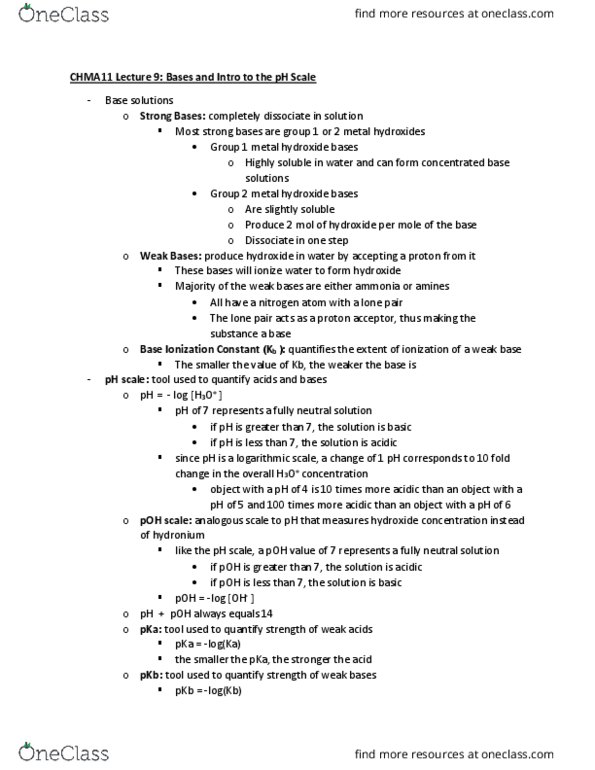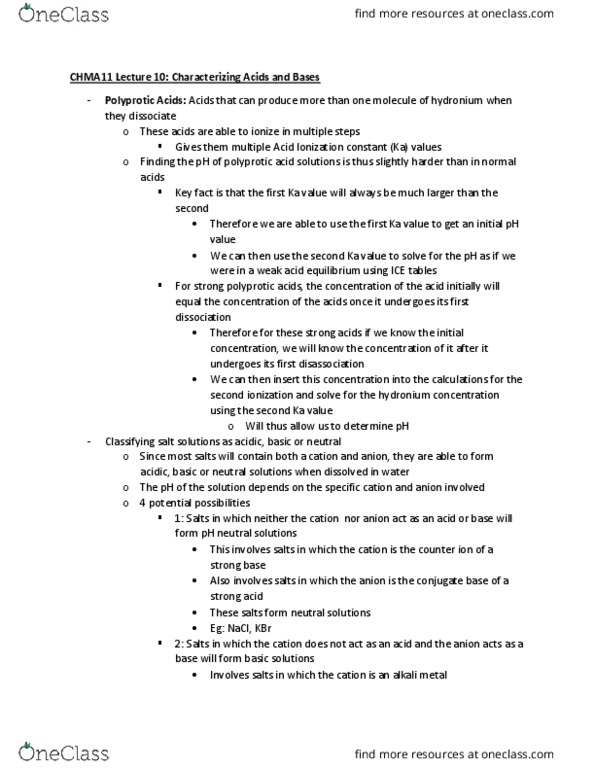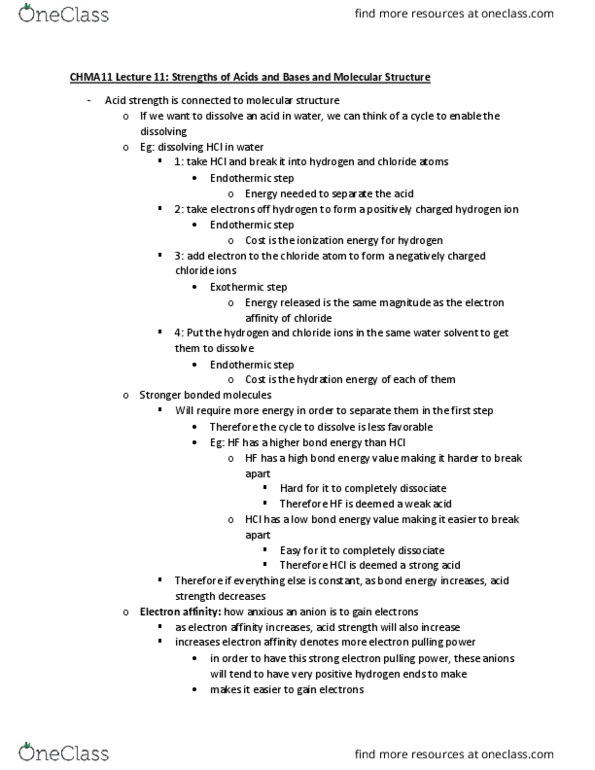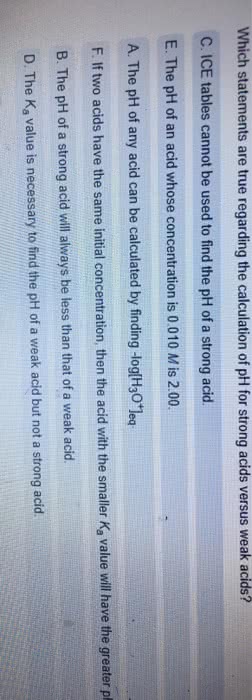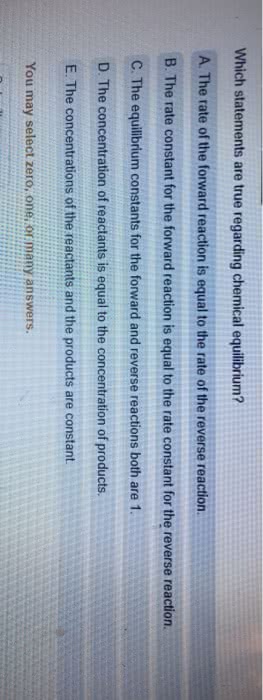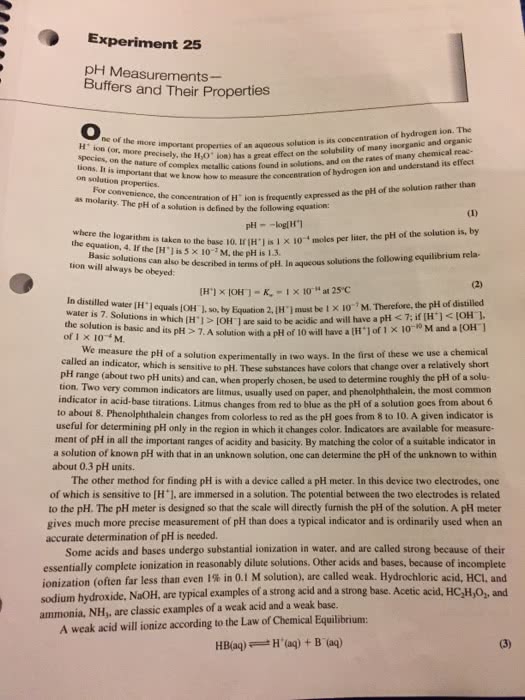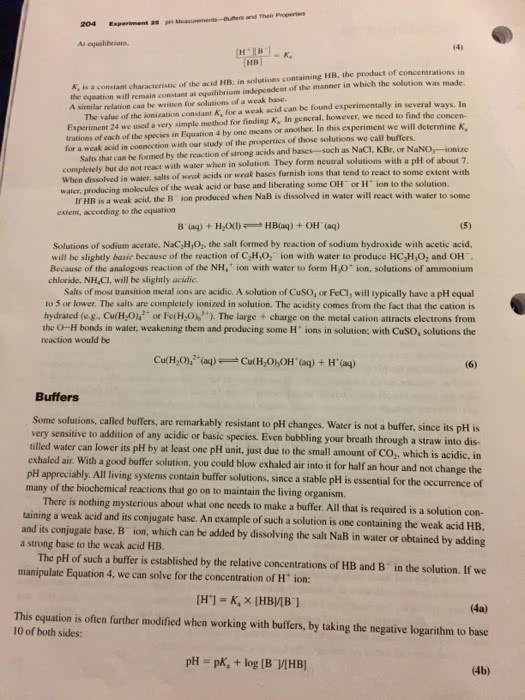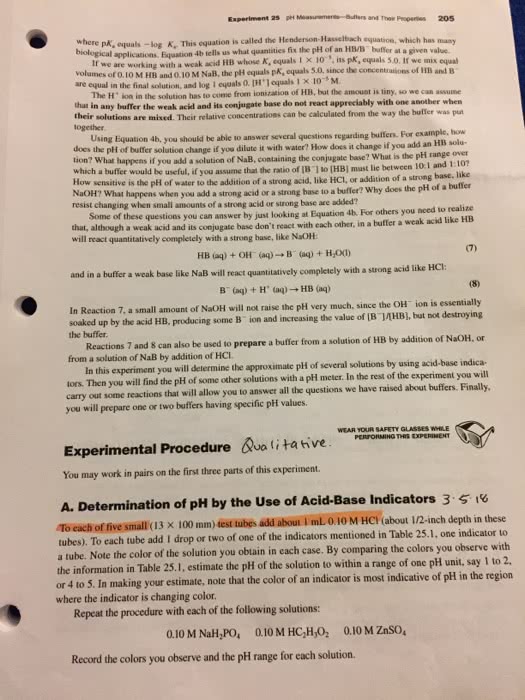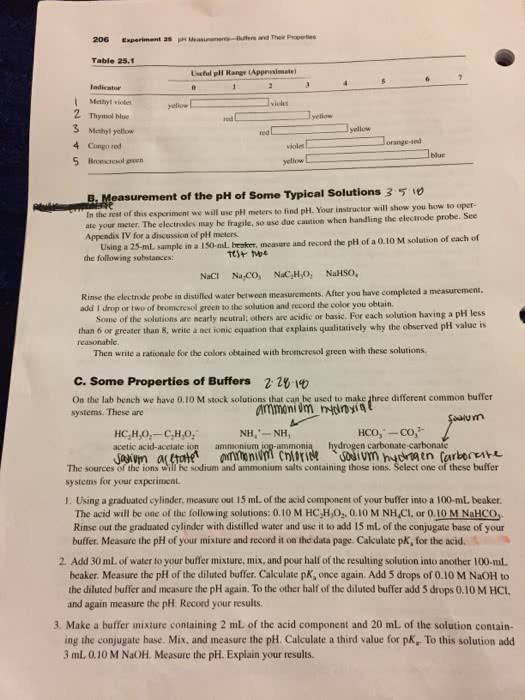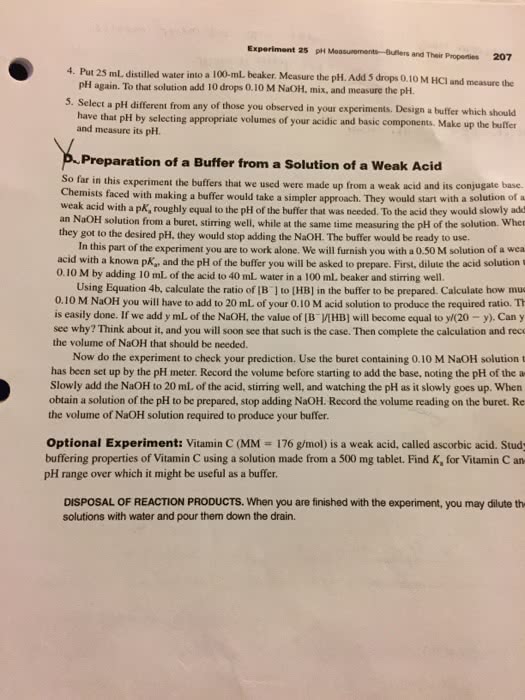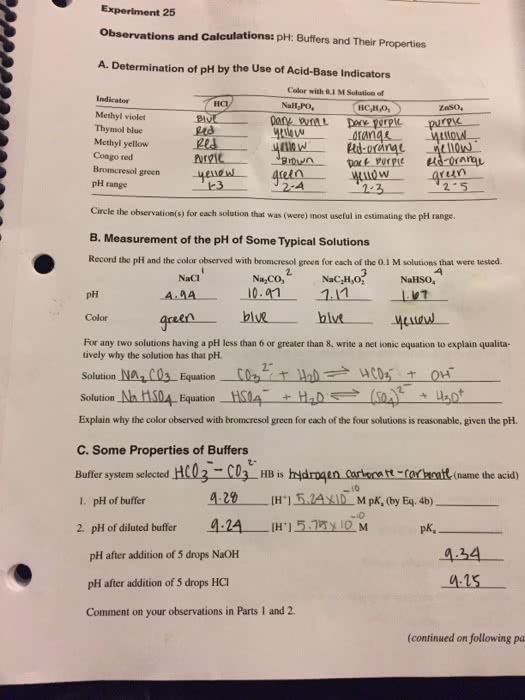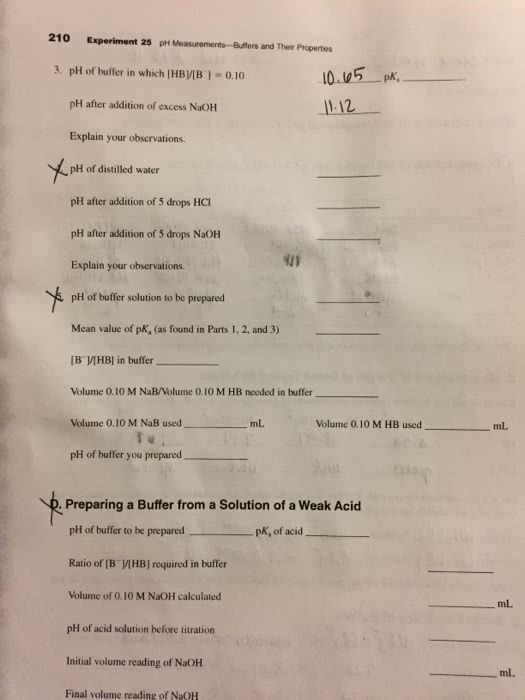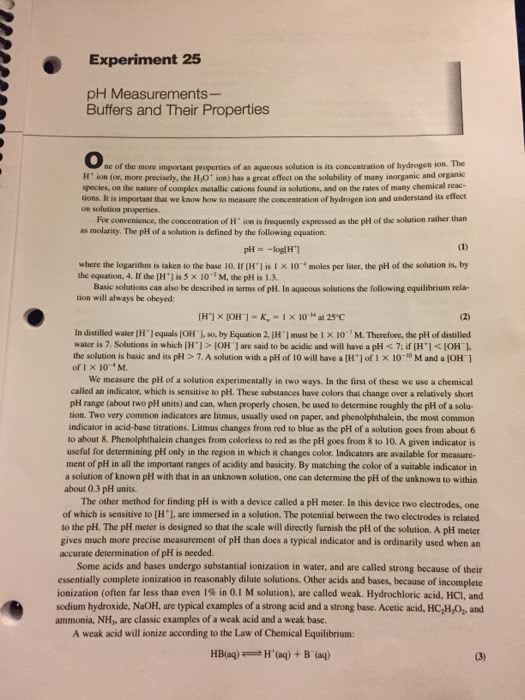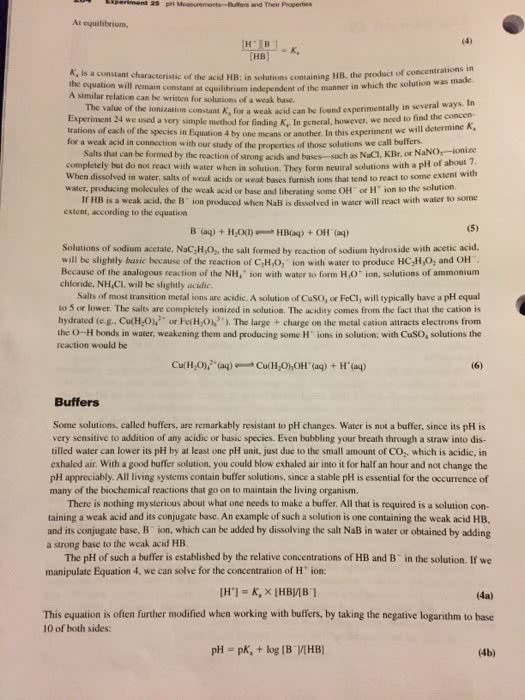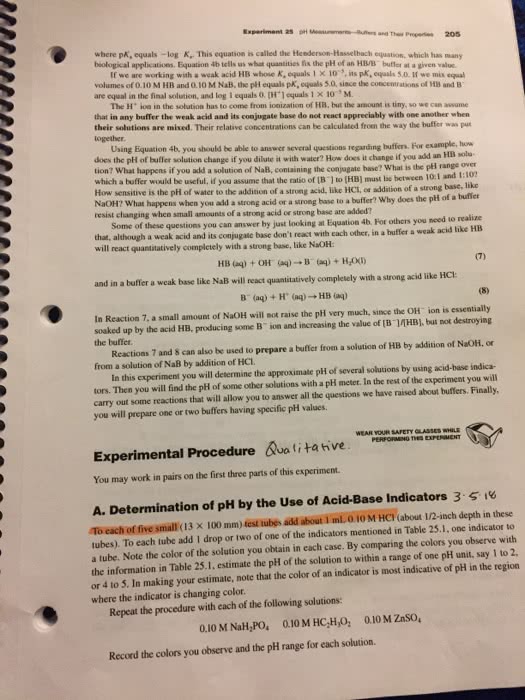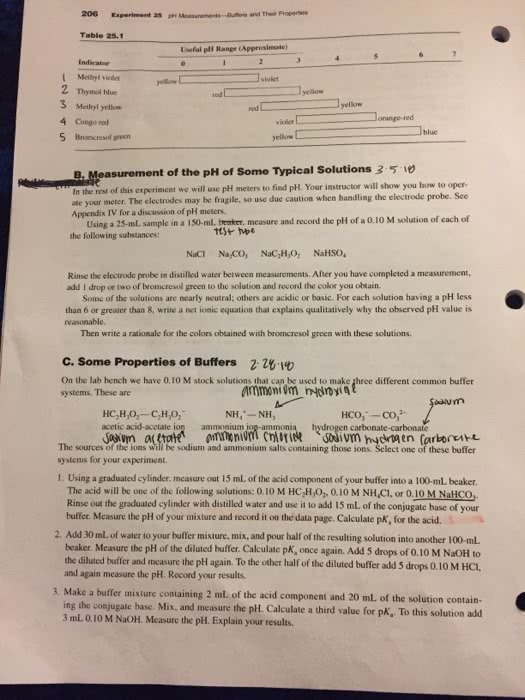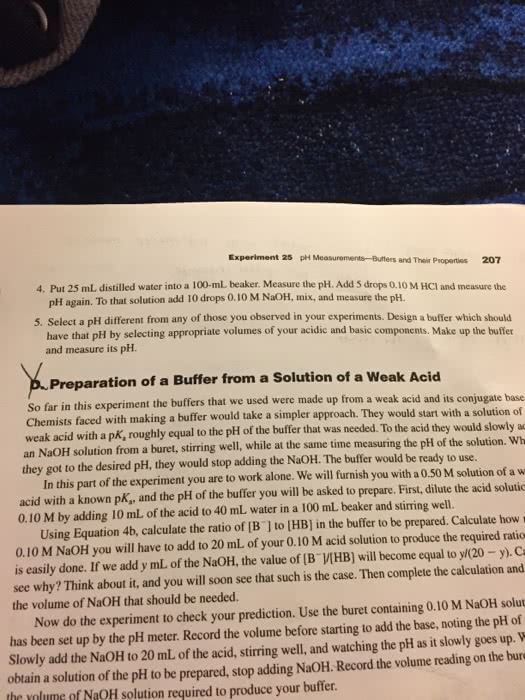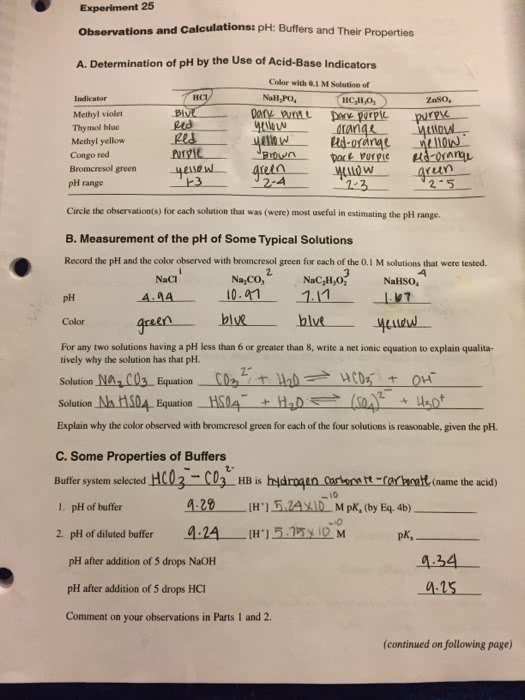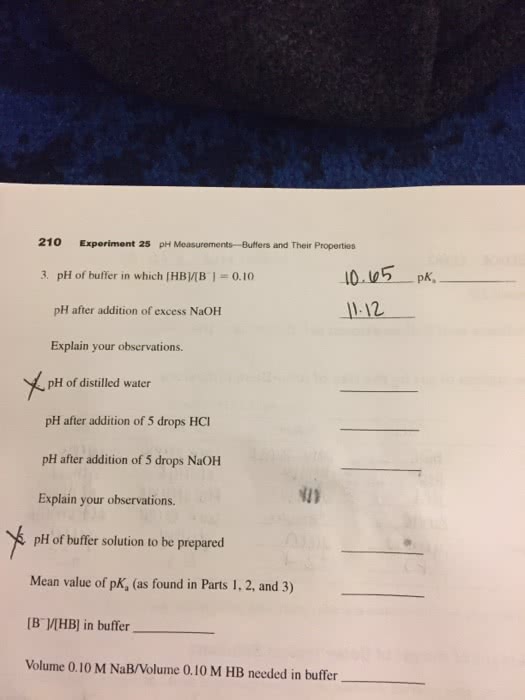Exp 25. pH Measurements-Buffers and Their Properties.
I need help in the calculations for part C finding the pKa in 1,2, and 3. Thanks!
Experiment 25 pH Measurements- Buffers and Their Properties ne of the is its concentration of hydrogen ion. The pecies, on they, the H,O ion) has a great effect on the solubility of many isorganic and ora tions. It is important H ion (or. more more important properties of an aqueous solution conplex metallic cations found in solutions, and on the rates of many chemical reac- of hydrogen ion and understand its effect on solution propertics that we know how to measure the concentration For convenience, the concentration of H" as molarity. The frequendly ex ãion is frequently expressed as the pH of the solution rather than pH of a solution is defined by the following equation: the equation, 4. If the [H to the base 10. If (H'l is 1 x 104 moles per liter, the pH of the solution is, by is 10-? M, the pH is 1.3. tion will always be obeyed: described in terms of pH. In aqueous solutions the following equilibrium rela- In distillecd water [H Soler t lequals IOH 1. so, by Equation 2, IH"] must be I X 10 M. Therefore,the pH of distilled will have a pH 7; if H 1 IOH1. the solution is basic and its pH >7. A solution with a pÅ of 10 will have or 1 Ã 10-4 M. We measure the pH of a solution experimentally in two ways. In the first of these we use a chemical an indicator, which is sensitive to pH. These substances have colors that change over a relatively short two pH units) and can, when properly chosen, be used to determine roughly the pH of a solu- called H range on. Two very common indicators are litmus, usually used on paper, and phenolphthalein, the most common indicator in acid-base titrations. Litmus changes from red to blue as the pH of a solution goes from about 6 to about 8. Phenolphthalein changes from colorless to red as the pH goes from 8 to 10. A given indicator is useful for determining pH only in the region in which it changes color. Indicators are available for measure- ment of pH in all the important ranges of acidity and basicity. By matching the color of a suitable indicator in a solution of known pH with that in an unknown solution, one can determine the pH of the unknown to within about 0.3 pH units. The other method for finding pH is with a device called a pH meter. In this device two electrodes, one of which is sensitive to [H'], are immersed in a solution. The potential between the two electrodes is related to the pH. The pH meter is designed so that the scale will directly furnish the pH of the solution. A pH meter gives much more precise measurement of pH than does a typical indicator and is ordinarily used when an accurate determination of pH is needed Some acids and bases undergo substantial ionization in water, and are called strong because of their essentially complete ionization in reasonably dilute solutions. Other acids and bases, because of incomplete ionization (often far less than even 1% in 0.1 M solution), are called weak Hydrochloric acid, HCl, and sodium hydroxide, NaOH, are typical examples of a strong acid and a strong base. Acetic acid, HCH,0, and ammonia, NH, are classic examples of a weak acid and a weak base. A weak acid will ionize according to the Law of Chemical Equilibrium HB(aq)H'(a) B (aq) 3)


